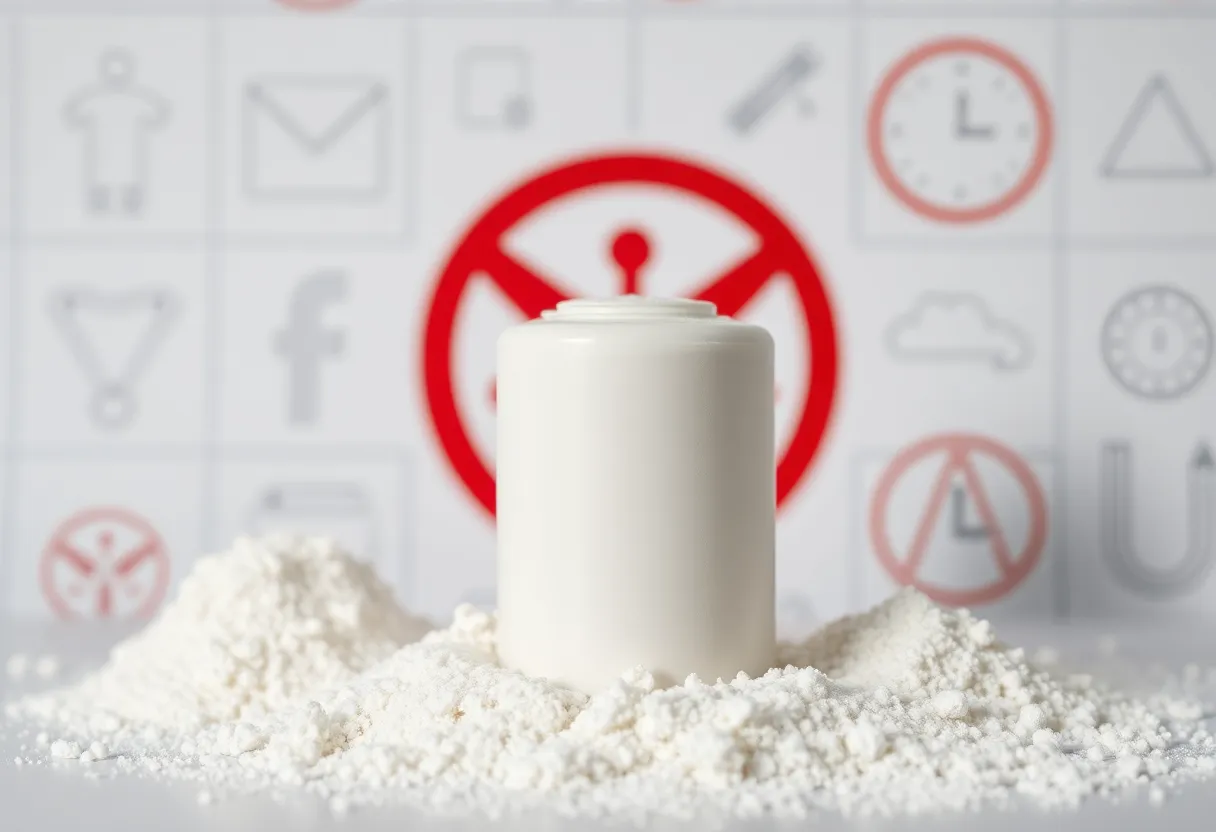News Summary
Proposed FDA Rule to Tighten Regulations on Talc-Containing Cosmetics Due to Asbestos Concerns
In a significant move poised to reshape the cosmetics industry, the Food and Drug Administration (FDA) has announced a proposed rule that will require manufacturers of talc-containing cosmetic products to adopt standardized testing methods for detecting asbestos. This proposed regulation is a direct response to decades of concern regarding the carcinogenic nature of asbestos, which is often found to contaminate talc during its mining process. Given that talc deposits frequently lie in close proximity to asbestos-containing rocks, the potential for contamination is high. The FDA urges manufacturers to ensure that their products are safe for consumer use.
The New Testing Requirements
If the proposed rule is finalized, manufacturers will have to conduct rigorous testing using polarized light microscopy with dispersion staining and transmission electron microscopy in conjunction with energy dispersive spectroscopy. Alternatively, brands may choose to rely on a certificate of analysis from their talc suppliers, but this will come with stringent requirements.
To remain compliant, manufacturers must test a representative sample from each batch or lot of their talc-containing products. The FDA defines a “representative sample” as one that is drawn using rational criteria to ensure that it accurately reflects the quality and safety of the sampled material. Under the new rules, any sample that tests positive for asbestos at or above the established detection limit using the prescribed methods will be deemed to contain asbestos.
Background and Motivation for the Rule
The proposed ruling is rooted in the Modernization of Cosmetics Regulation Act of 2022 (MoCRA), which called for the creation of standardized methods for asbestos testing. The culmination of years of public health efforts, the new regulations aim to prevent unsafe products from reaching consumers.
Historically, the FDA has been active in sampling and testing talc-containing cosmetics for asbestos, having detected asbestos in 9 out of 52 products tested in 2019. Fortunately, no asbestos was found in samples collected in 2010 and 2023. Nevertheless, the presence of asbestos in cosmetics remains a critical issue, as evidenced by findings from the Environmental Protection Agency (EPA), which highlighted that vermiculite or talc mined from ore containing asbestos could become contaminated.
Manufacturer Responsibilities
Manufacturers must not only conduct tests but also keep thorough records as per the new proposed requirements. This includes asbestos test results, certificates of analysis from suppliers, and documentation of supplier qualifications. All records are expected to be available for FDA review within one business day of request and retained for a period of three years.
Failing to adequately test talc-containing products for asbestos or maintain proper records will render these products illegal to sell or distribute, as any asbestos present is regarded as injurious to users, given that no safe exposure level has been established.
Market Reactions and Consumer Safety
While the FDA has reported that over 150 cosmetic samples tested since 2021 returned negative results for asbestos, the shadow of past controversies still looms large. Talc has been historically linked to allegations regarding ovarian cancer, prompting lawsuits against major manufacturers such as Johnson & Johnson, which were centered around their talc products.
In another alarming incident, asbestos contamination was discovered in products sold by Claire’s Stores in 2019, resulting in a product recall. More recently, Dynarex expanded its recall of baby powder in late October 2024 due to potential asbestos contamination. Meanwhile, Johnson & Johnson has faced extensive litigation regarding cancer allegations and gradually ceased sales of talc-based baby powder both in the U.S. and internationally.
Next Steps and Public Engagement
The FDA has laid out a timeline for the proposed rule, which is expected to take effect 30 days after its publication in the Federal Register. Stakeholders and the general public will have 90 days to submit comments on this proposed rule, with the comment period concluding on March 27, 2025. With public health as the priority, the FDA’s actions may well represent a turning point towards ensuring that cosmetic products are safer for consumers.
Deeper Dive: News & Info About This Topic
HERE Resources
Asbestos Risks Soar Amid Ongoing Conflict in Israel
FDA Takes Big Steps to Tackle Asbestos in Talc
FDA Proposes Bold Move to Combat Asbestos in Talc-Containing Cosmetics
FDA Takes Bold Steps to Tackle Asbestos in Talc-containing Cosmetics
FDA Proposes Life-Saving Rules to Tackle Asbestos in Cosmetics
New FDA Proposal Targets Asbestos in Talc-Containing Cosmetics
Asbestos Scandal Erupts at Long Beach’s Colorado Lagoon Construction Site
U.S. FDA Proposes Asbestos Testing for Talc in Cosmetics
Global Asbestos Crisis: Unmasking the Deadly Dangers
FDA Proposes Stricter Asbestos Testing for Talc-Containing Cosmetics



















